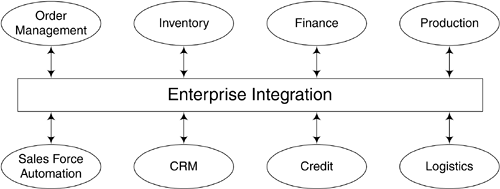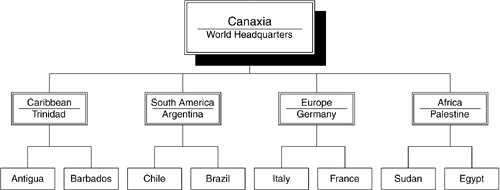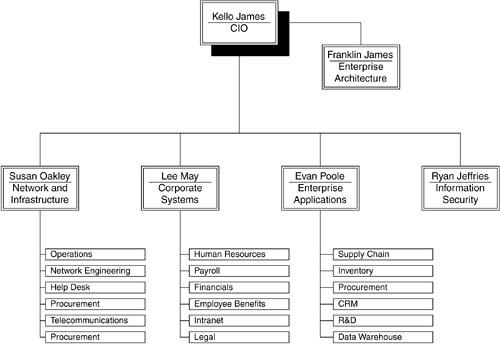Appendix A. Business Case
Examples within this book are based upon a fictitious auto manufacturer, Canaxia, based in the United States with locations throughout North America, the Caribbean, South America, Europe, and Africa. Canaxia is headquartered in Bloomfield, Connecticut, and was incorporated on August 24, 1967. It is a public company listed on the New York Stock Exchange and has 50,000 employees worldwide. To maintain a competitive business advantage, this manufacturer needs to modernize its supply chain and other internal systems. The infrastructure (sometimes referred to as the nervous system) for the organization consists of a mix of applications written in different languages and run on various platforms. The vast majority of the applications are written in COBOL running on two IBM mainframes in two different data centers. The organization is working diligently to migrate legacy COBOL applications off the mainframe and has adopted Java and J2EE as its future application environment of choice.
The overall architecture of Canaxia has remained largely unchanged for 20 years. The lack of willingness to fund technology upgrades over time has caused Canaxia's systems to become difficult to maintain. Canaxia's CIO, Kello James, has mandated that all future applications be developed in a modular manner and that they use the architecture principles contained within this book. The first mandate was to select a Java-based application server and write all future business logic using Enterprise JavaBeans™ (EJBs). Kello James would also like to integrate several disparate systems that exist throughout the organization, and he requires that all systems communicate in a loosely coupled manner. Figure A-1. View of the enterprise.
Figure A-2. Canaxia organizational structure.
Canaxia's CIO wants to make sure that all information is fully integrated and that any proposed solution provides seamless access. All systems should be fully accessible from not only the headquarters but also from the regional offices, provided that the user has the appropriate permissions. Furthermore, Canaxia would like to extend access to its internal systems to customers, suppliers, and business partners to reduce support in its call centers, as well as to allow for automated invoicing, ordering, and purchasing. Canaxia has unique problems in that it currently does not have the ability to create reports in a timely manner on key business processes. The ideal enterprise architecture would allow extraction of information from multiple systems and creation of a consolidated view at any time. Users have requested ad hoc reporting capabilities against several systems to help them accept last-minute changes to the cars they produce, even while they are on the assembly line. Figure A-3. Canaxia organizational chart.
The CIO of Canaxia, Mattie Lee Mitchell, has encouraged the CTO, Kello James, to adopt wherever appropriate the use of open standards and frameworks. Mattie Lee hopes that by using products and tools that adhere to open standards, Canaxia can lower its acquisition and licensing costs for software, as well as leverage knowledge among different project teams. Mattie Lee also requires a waiver be obtained when technology choices go against open standards. Any examples, companies, organizations, products, domain names, email addresses, people, places, and events depicted herein are fictitious. No association with any real company, organization, product, domain name, email address, person, place, or event is intended or should be inferred. |
EAN: 2147483647
Pages: 148


